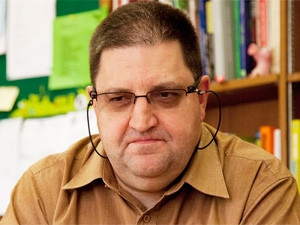
How fantastic is 3D printing? With entry-level units available from under R10 000, it's not inconceivable they might well become as ubiquitous in the (slightly above) average household as the home PC. Who remembers the thrill of having their own, or at the very least access to a friend's, early home computer like the ZX Spectrum or Commodore 64?
The possibilities of what these home computers could do sparked the imagination of a whole generation, leading to modern-day consumers holding tremendous computing power in the palm of their hands by way of tablets, notebooks and smartphones.
Are we likely to see 3D printing technology develop to the same ease of use? Almost certainly. Are we likely to develop into a society of 'makers' who've taken the print-on-demand concept to the level where you no longer buy products but print them yourself? That's a lot less certain, despite the assertions of 3D printer makers and enthusiasts that this is a real possibility.
The coolness factor, however, is far less important to Colin Northmore, the educator and technology pundit heading up Sacred Heart College, in Observatory, Johannesburg, for the past 11 years.
For those not familiar with the geographic layout of the city, Observatory is a stately neighbourhood gone partly to ruin thanks to urban sprawl, particularly from adjacent Yeoville, so it's a far cry from the leafy northern suburbs that host many of Joburg's prestigious schools.
Unconventional
Sacred Heart has long been a beacon of hope and innovation that defied the apartheid government by adopting a multiracial admissions policy in 1976. Northmore explains that the school staff has a strong bias for forward-thinking, particularly because it had to develop a curriculum to meet the needs of its multiracial student body.
"Like any school with the resources to do it, there's been a lively debate about iPads in education, 3D printing, touch-screen technology, game theory in education, IT as a subject and integral to all subjects, and critical thinking skills. So the soil is fertile for discussion around what we need to be doing with these children," he says.
3D printing benefits
Increase innovation
Print prototypes in hours, obtain feedback, refine designs and repeat the cycle until designs are perfect.
Improve communication
Create physical 3D models quickly, easily and affordably for a wide variety of applications.
Improve time to market
Compress design cycles by 3D-printing multiple prototypes on demand, right in your office.
Reduce development costs
Cut traditional prototyping and tooling costs.
Identify design errors earlier
Reduce travel to production facilities.
Win business
Bring realistic 3D models to prospective accounts, sponsors and focus groups.
"I'd earmarked 3D technology as a potential educational tool three years ago, but I didn't do anything about it until the person who teaches computers in the primary school said she would like the school to have a 3D printer. Even then I held off until she could articulate how she would use the printer."
Northmore explains that it's important for teachers to take ownership of these cutting-edge projects if they are to succeed.
And from an educational point of view, the technology or platform is far less important than the skills the children acquire. For the college head, the value of the school's fairly basic 3D printer lies in helping to develop abstract and concrete thinking. "So the kids are able to say, 'Okay, that doesn't work... I have to go make corrections [in the design] so that it works in the concrete.' Without them realising it, you're moving them between the concrete and the abstract."
These are the kinds of skills that are going to become increasingly valuable for his students, as chances are good they will enter careers that don't yet exist. For this reason, Sacred Heart has targeted the classes using the 3D printer at the primary school to give them the best chance to develop these critical thinking skills over their school careers.
From an educational point of view, the technology is far less important than the skills the children acquire.
And while the 3D printer is one of the more recent acquisitions for Sacred Heart, it's far from being the only technology used to steer their learners in the right direction. Apart from using iPads in selected environments, the college also uses videoconferencing technologies to connect with schools around the globe for collaboration, and has a dedicated app development programme for the Grade 7s, who are learning critical skills they can use well into the future.
First published in the July 2013 issue of ITWeb Brainstorm magazine.
* Article first published on brainstorm.itweb.co.za
Share